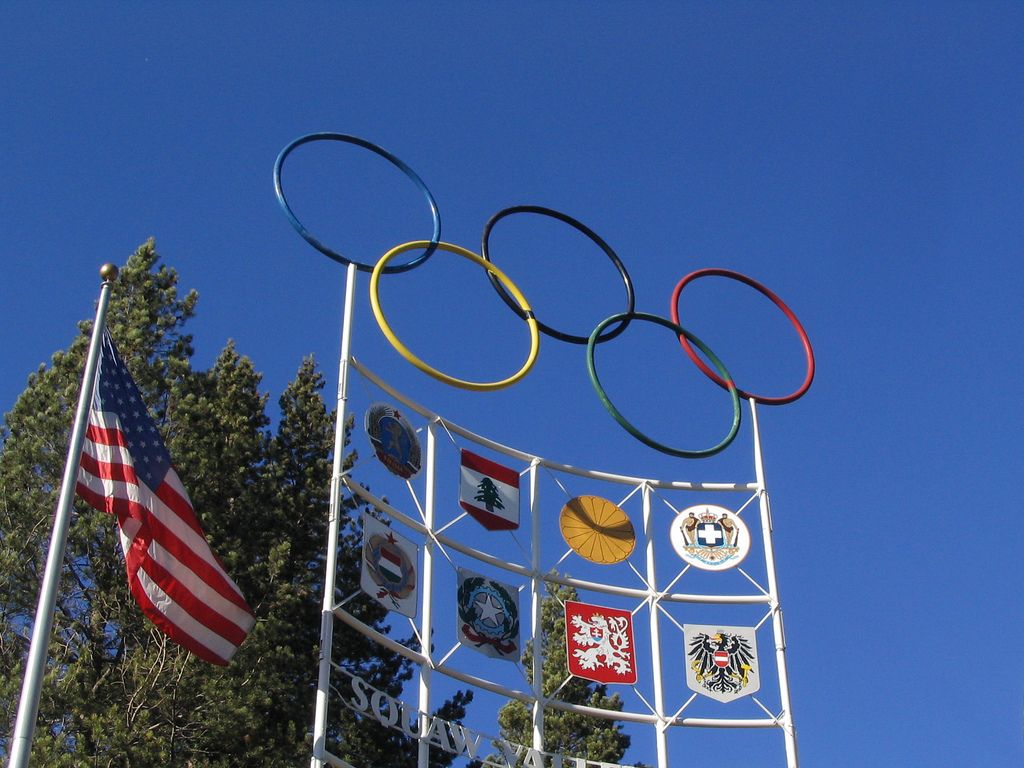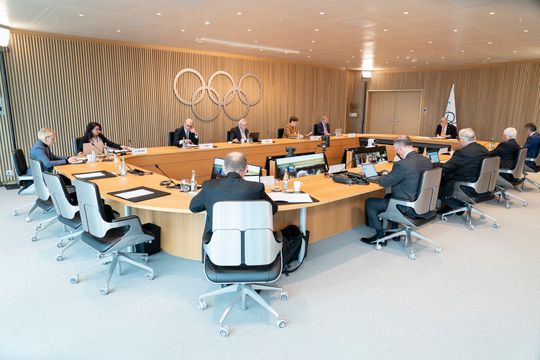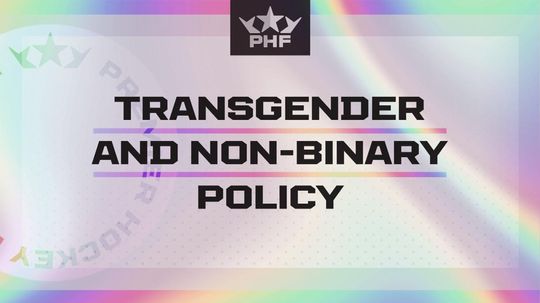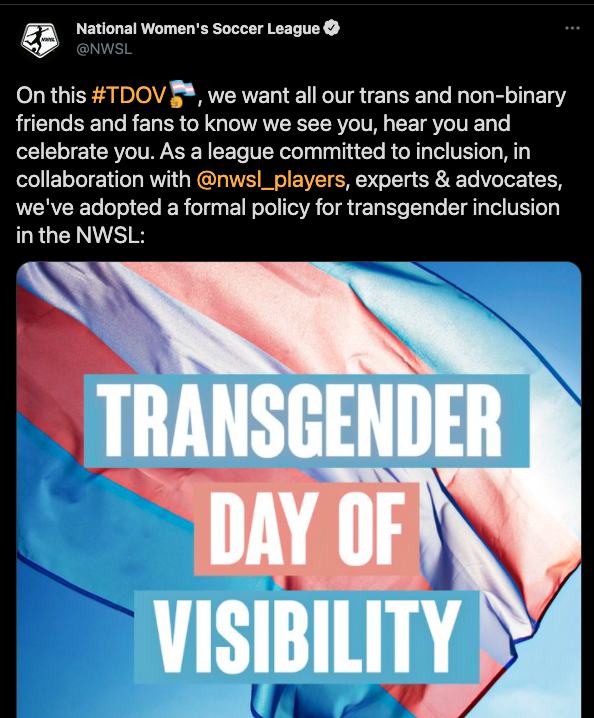This is the third piece in a three-part series about gender policies in sports. The first piece addressed the history of gender regulations and testing at the Olympics in the 20th century, highlighting that such policies led to discrimination against gender diverse competitors. The second piece focused on 21st century gender policies at the elite level and how these policies discriminate against transgender athletes and athletes with hyperandrogenism. Part III looks at the current state of gender policies and how they must be improved.
Right now, transgender inclusion is increasingly a priority in the sports world, but are these policies both meeting the needs and respecting the rights of trans athletes? The vast majority of sports organizations lag behind current scientific and cultural understandings of gender and inclusion in sports -- so what is their path ahead? More importantly, how are their current policies deficient?
The previous installments of this series explored how gender has been policed and used against successful athletes who do not easily fit the conventional understanding of what it is to be feminine. These policies severely restrict the agency of gender-diverse athletes all in the name of ensuring "fair play" in women's sports. An important part of this is the relationship between gender policies developed for elite competition and gender policies at a developmental or recreational level. To understand this, we need to look at transgender inclusion policies at every level, as trans participation is where the current gender debates are occurring in sports.
I decided to focus on national governing bodies in Canada and the United States in this article, because of the various responsibilities that these organizations have in elite and recreational sports. Sports national governing bodies (NGBs) are both concerned with elite competitive sport at the national and international level, as well as developmental and recreational sport within a country. Often, considerations and legislation that are applied to elite athletes who compete at national and international competitions are applied more broadly to developmental and recreational athletes, with serious consequences for the gender-diverse athlete as a result.
NGBs play a significant role in creating policy and leadership on these matters. Some NGBs intend their trans inclusion policies to be rules followed by more local sports organizations, and some NGBs intend their trans inclusion policies to be more of a suggestion or recommendation. Some have crafted sport-specific trans policies; others have followed the lead of international sports organizations like the IOC and parent bodies like the IAAF. While adherence to the IOC's guidelines is common, there is no standardization when it comes to gender policies and trans inclusion guidelines. The result is that trans inclusion varies wildly depending on sport and trans inclusion -- and that acceptance isn't guaranteed.
Many of the trans inclusion policies currently in place at the national level in Canada and the United States are designed for elite athletes and elite competition. But these guidelines influence subordinate organizations whose aim is recreational play. These policies mandate specific medical treatments for trans athletes that are impractical to enforce at the recreational level, and hinder overall trans and gender diverse participation in all sports.
These policies ostensibly intend to ensure "fair play" in women's competitive sport. As explored more fully in Parts I and II of this series, gender policies operate on a widely held belief that women's sports need to be protected -- protected from trans athletes, athletes with intersex characteristics, nonbinary athletes, genderqueer athletes, and gender-nonconforming athletes who are believed to have unfair physical advantages. In reality, trans athletes, Two-Spirit athletes, athletes with intersex traits, nonbinary athletes, genderqueer athletes, agender athletes, and gender nonconforming athletes need protections and policies that ensure their inclusion and allow their agency. Gender policing in elite women's sports has a long and discriminatory history, as Parts I and II of this series have made clear. Policing gender in women's sports does not regulate advantage, but instead discriminates against women athletes based on stereotypes. Women's sports don't need to be protected; instead, women's sports need to be fully funded and supported, with an equitable share of sports resources.
Likewise, gender-diverse athletes need to be able to access an equitable share of sports resources. Gender should not be policed in sports. Gender identity should not be regulated, examined, and subjected to committee approval to play games. Where gender segregation does exist in sports, gender-diverse athletes should be accommodated on their terms. When concerns about unfair playing advantages arise, the alleged "advantage" should be regulated, not the gender or identity of an athlete. This has been achieved for decades in many sports by age divisions or different weight classes. Trans agency must be respected as much as cis agency is routinely acknowledged.
This type of "fair play" as a guiding principle discriminates against gender-diverse athletes at the elite level. Many NGBs have extended that doctrine and have applied it to recreational and developmental guidelines. This harms gender-diverse athletes. It harms gender diverse athletes because applying elite level guidelines to recreational sports mandates specific treatments, procedures, and legal actions, which don't necessarily address the needs of trans, nonbinary, agender, or gender nonconforming individuals. These requirements can be financially prohibitive and inaccessible. Mandating specific treatments and legal actions is not about "fair play." It's certainly not fair to gender-diverse athletes, and such policies treat cis athletes as the norm and gender-diverse athletes as inconveniences. Trans, nonbinary, genderqueer, gender-nonconforming, Two-Spirit, and athletes with intersex traits all have a right to play sports at every level. Truly fair gender policies and guidelines must reflect this.
Given the number of policies included in the supplementary material to this piece, it is necessary to give a general overview of organizations with inclusive and trans-affirming policies, those that are more conservative and restrictive, and finally, those that are purely violations of the rights of gender-diverse athletes.
The Good — national governing bodies that allow trans athletes to self-identify at the youth or recreational level
US Quidditch, USA Cycling, USA Swimming, USA Track & Field, USRowing, Bowling Federation of Canada, Canadian Lacrosse Association, Handball Canada, Quidditch Canada, Ringette Canada, Swimming Canada, Ultimate Canada
These organizations allow youth and/or recreational athletes to self-identify and participate in the gendered activity of their choice. Self-identification as a policy is important because it makes sport more accessible to gender-diverse athletes. Trans youth cannot make legal changes to their gender without parental support, nor can they seek medical treatment (such as puberty blockers) without parental consent. Both actions require additional financial costs on top of the existing registration and equipment fees that are required to participate. In short, requiring legal proof (government issued identification) or medical proof of gender for youth to participate in sports literally adds a trans levy to kids' participation.
Additionally, the accessibility of trans health care varies by region, and legal gender changes are simply not possible in some states. By allowing trans youth and other gender-diverse athletes to self-identity, these organizations foster accessibility and inclusion and allow kids to develop their skills as athletes.
Just as important are those guidelines that allow athletes to self-identify while participating in recreational sports. There is no reason for gender-diverse athletes at the youth, adult, or senior level to be required to undergo medical treatment or provide proof of their identity to play organized sports for fun. That so many other NGBs require proof of medical treatment or legal gender change for trans athletes to participate in organized sports is a violation. Sports provide community, physical exercise, and often have positive effects on mental health. That national governing bodies put additional and restrictive barriers to trans, nonbinary, Two-Spirit, genderqueer, and gender-nonconforming participation is hugely problematic for gender-diverse health. If you respect trans, genderqueer, nonbinary, gender nonconforming, and intersex people, you wouldn't require us to prove our identities before including us.
It should be noted that both US Quidditch and Quidditch Canada specifically allow for the inclusion of nonbinary athletes, a group of athletes ignored by almost all other organizations. Quidditch gender regulations are a model for other organizations seeking to draft Two-Spirit, trans, nonbinary, genderqueer, gender nonconforming, and intersex inclusive and accessible policies as they allow athletes to self-identify, include nonbinary athletes, and specify gender quotas to ensure that an equitable gender division of players exists on the field at all times. Significantly, these policies govern both recreational and elite level play.
The "Needs Considerable Improvement" — national governing bodies that allow trans athletes to participate provided they meet certain medical and/or legal requirements
United States Soccer Federation, USA Climbing, USA Curling, Badminton Canada, Canada Soccer, Canadian Powerlifting Union, Judo Canada, Softball Canada, Volleyball Canada, Wheelchair Basketball Canada
As I've already illustrated, requiring "proof" of gender is prohibitive for trans athletes who cannot access the medical and legal proof that these organizations are mandating. Requiring "proof" of gender is also problematic because there is infinite variety in trans identity and presentation, but such "proofs" have a narrow mandate that rests on binary assumptions about gender.
Requiring "proof" of gender is problematic for another reason: it casts doubt on the validity of self-identification and trans identity more broadly. A handful of organizations, like the United States Soccer Federation, require "documentation or evidence that shows the stated gender is sincerely held, and part of a person's core identity" and can typically be fulfilled to the USSF and other organizations' satisfaction by providing medical or government documentation. But: self-identification illustrates that trans identities are sincerely held and part of our core identity. Requiring additional proof shows a distrust of trans motivations for participating in the gender categories we feel best fit our selves; it shows more concern for issues of "fair play" and "unfair competitive advantages" than it does trans inclusion. Requiring additional proof undermines trans expertise and trans agency at youth and recreational competition levels, which should never have required additional proof in the first place.
Many organizations that allow trans athletes to participate provided they meet certain medical and/or legal requirements follow current IOC guidelines for post-puberty trans athletes. However, dividing eligibility along pre- and post-puberty lines shows a lack of understanding about puberty. Puberty is not a static state that divides into two distinct categories; it is a process that lasts for years. Puberty is individually experienced -- that is to say, puberty does not begin at the same age or the same way for each child. For organizations with trans inclusion policies divided by puberty, it is likely that youth athletes experiencing puberty are treated as post-puberty adults. But teens experiencing puberty are not the same as adults who have already endured puberty. For trans teens, this age is more complicated. Not every trans teen has access to hormone blockers, if they desire them, and trans teens do not have access to hormone treatments like testosterone until their late teens at the earliest. By treating young trans athletes as adults from the start of puberty, inclusion policies effectively limit trans access to recreational and competitive sports, ensuring that there are fewer trans elite athletes and fewer trans athletes who keep playing through to adulthood.
Using the IOC guidelines for recreational play is problematic because it's especially restrictive to trans women. While the IOC's trans inclusion policies are problematic in their own way, the specific regulations (especially the requirement that an athlete's testosterone level in serum be below 10 nmol/L to compete in women's sports) are completely impractical to monitor and simply unnecessary to mandate at the recreational level. If it's for fun, what do hormone levels matter?
Several Canadian organizations (Softball Canada, Volleyball Canada, Wheelchair Basketball Canada, etc.) require hormone therapy for all trans competitors; trans athletes who don't undergo hormone therapy "will be deemed to be their birth gender." This contradicts current IOC guidelines and is especially prohibitive as it requires a specific medical treatment as validation of identity. It also forces trans athletes who don't want to undergo hormone therapy to participate in gender assignments that simply don't fit. Allowing trans athletes not undergoing hormone therapy to participate in sports according to their birth gender might seem like a way to ensure that trans athletes still have access to sports, like an inclusion policy. In reality, not allowing trans athletes to participate as the gender in which they identify serves to drive trans athletes away from sports. The result is a policy that dictates to trans athletes what valid trans expression looks like and doesn't respect their agency or seek to include them.
The Bad — national governing bodies that do not have trans inclusion policies
approximately 70 NGBs in Canada and the United States
Many of the organizations I reached out to were in the middle of evaluating their existing gender policies, revising current guidelines to include trans athletes, or simply did not have policies regarding transgender inclusion. Some were unsure if they had policies and of who in their organization should be asked to clarify the organization's position on trans inclusion.
In an era in which the participation of gender-diverse athletes in sports is highly debated and contested, not having a policy is simply negligent. Even organizations that have mixed gender competition need to have gender-diverse inclusion policies to ensure the same level of access afforded to cis athletes is available to trans athletes. Not having a gender-diverse inclusion policy in place leaves individual trans, nonbinary, genderqueer, Two-Spirit, agender athletes, and athletes with intersex traits, at the mercy of local or regional officials whose cooperation and acceptance is not guaranteed.
Having an existing policy in place allows trans athletes to anticipate what kind of organizational support they can receive. Having an existing policy gives coaches, managers, and administrators resources, such as pronoun guidance and travel team accommodation rules, to ensure a safe and inclusive environment for all athletes. Including gender-diverse athletes in national governing body regulations means other organizational regulations, such as harassment protections, can apply to them.
The Horrendous — national governing bodies that still follow the Stockholm Consensus
Curling Canada, United States Golf Association, USA Boxing, USA Gymnastics, USA Rugby, USA Weightlifting
The Stockholm Consensus was a violating and abusive policy when it was introduced by the IOC in 2003, and the IOC concluded as much when it revised its transgender policy in 2015. The committee that revised the IOC's guidelines determined that the Stockholm Consensus provisions "to require surgical anatomical changes as a pre-condition to participation is not necessary to preserve fair competition and may be inconsistent with developing legislation and notions of human rights." In short, requiring trans athletes undergo surgery before being allowed to compete violates their human rights and doesn't ensure "fair play." It was, instead, a provision designed to ensure that cis, binary standards were enforced against trans bodies. Despite the IOC's reversal two years ago, several national governing bodies still enforce the surgery components of the Stockholm Consensus.
Simply put, these organizations are expressly transphobic and their trans inclusion policies are violent and abusive. By requiring trans athletes to undergo gonadectomies, the above organizations mandate sterilization in order for trans athletes to play the sports they love. These policies must be updated immediately with consultation from the trans community.
Building a better gender-diverse inclusion policy
Trans inclusion policies must become gender-diverse inclusion policies to ensure that no athletes are left behind. While "trans" is an umbrella term, many gender-diverse folks identify another way and their identities should be respected and reflected in official policies. In addition, cis folks often have a very narrow and binary understanding of the term "trans," so much so that Two-Spirit and nonbinary identities must be clearly articulated in gender-diverse inclusion policies if we want to ensure that Two-Spirit and nonbinary athletes are included in cis-dominated sports leagues.
For organizations wishing to create a gender-diverse inclusion policy or wishing to improve an existing policy, it is essential to involve the gender-diverse community (Two-Spirit, trans, nonbinary, genderqueer, agender, gender nonconforming, and intersex athletes, volunteers, administrators, advocates, parents, and youth) at every stage of development or revision. This is essential because the process must centre the needs and requirements of gender-diverse folks. The policies discussed in this piece and detailed in the supporting documents illustrate regulations that centre the needs of cis organizers and athletes. That must change to foster true inclusion.
Better gender inclusion policies have the right of self-identification at their core. Currently, most organizations that allow for self-identification only do so for kids who have not begun puberty. Kids should absolutely be able to self-identify when they participate in organized sports. However, that right should be extended to all recreational athletes. Gender-diverse teens and adults deserve the same respect and the same opportunities to participate in physical activities. If we are truly invested in fair play, making sports accessible to gender-diverse athletes at every age, and acknowledging that gender-diverse athletes should be making health decisions and legal changes based on their own specific needs and not on eligibility requirements, must be priorities.
Organizations wishing to create gender-diverse positive guidelines must expressly move beyond the restrictions of binary gender. Similarly, they must also move beyond an understanding of trans identities that is solely binary. This is not to say that all gendered activities should be abolished; but rather that national governing bodies must acknowledge the existence of trans, nonbinary, Two-Spirit, genderqueer, agender, gender nonconforming, and intersex athletes.
Athletes who do not fit with or identify with the gender binary should still have a place on the team. Nonbinary athletes should be included in gendered competition if they desire, but teams and leagues that are not dependent on the gender binary should also be encouraged and institutionally supported. Mixed-gender sports, which expressly include nonbinary athletes, should be encouraged, celebrated, and supported, especially at the recreational level. Title 9¾, the trans and nonbinary inclusive gender policy developed by US Quidditch and followed by Quidditch Canada, should serve as a model for organizations that wish to develop gender-diverse inclusion policies.
Organizations should develop policies that distinguish between developmental or recreational sports and elite competition. Trans inclusion policies that govern elite-level play should be as inclusive as possible. Two-Spirit, trans, nonbinary, genderqueer, agender, and intersex athletes should still be allowed to self-identify as such and compete in the gendered competition of their choice at the elite level. Mixed sports at the elite level must be inclusive of trans and nonbinary athletes. Gender-diverse inclusion policies for elite athletes should reflect policies like that of Swimming Canada or Ringette Canada, which respect the need for self-identification with the expectation that national governing bodies are compliant with international federations, the IOC, and WADA. National governing bodies can and should push their international parent organizations for greater inclusion and acceptance of gender-diverse athletes, and advocate for self-identification to become the standard internationally.
In short: when creating developmental, recreational, and elite level inclusion policies, national governing bodies must prioritize self-identification for gender diverse athletes. Those who work in administrative positions with national governing bodies must recognize gender diverse athletes as equal to cis athletes rather than second class. Those in positions of power must recognize that trans, nonbinary, genderqueer, agender, Two-Spirit, gender nonconforming athletes, and athletes with intersex traits have the same rights, the same entitlement, to play organized sports as cis folks. Gender-diverse athletes must be seen as competitors and not threats.
The following documents are a resource including every gender policy from sports national governing bodies in the United States and Canada that we were able to find. Some policies are public, others are not. Policies that were only provided via email are indicated with a dagger and color coded. Documents are fully searchable and available to be shared and published, thanks to DocumentCloud.
Transgender Inclusion Policies by Canadian National Governing Bodies
Transgender Inclusion Policies by United States National Governing Bodies
Stockholm Consensus (2003)
IOC Consensus Meeting on Sex Reassignment and Hyperandrogenism (2015)
(Photo: Flickr/Ken Lund)







